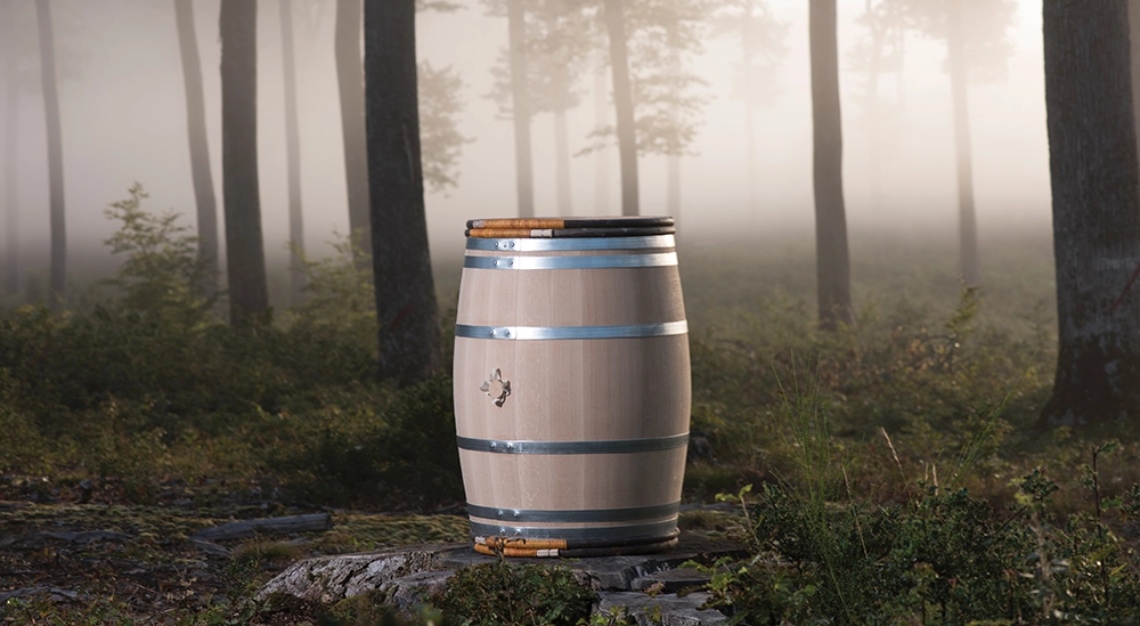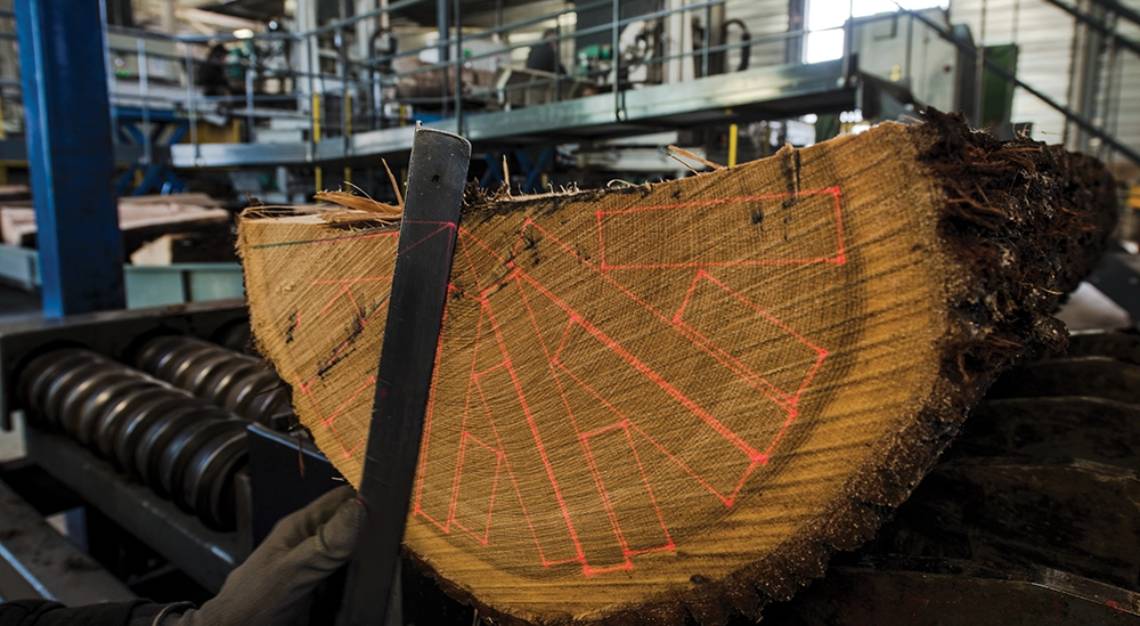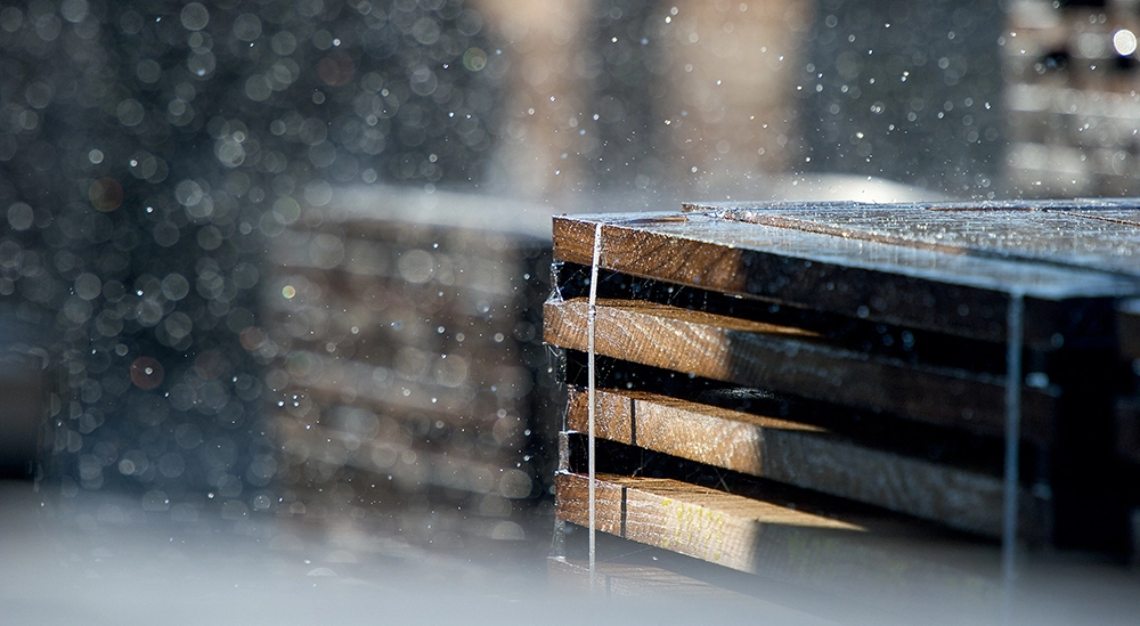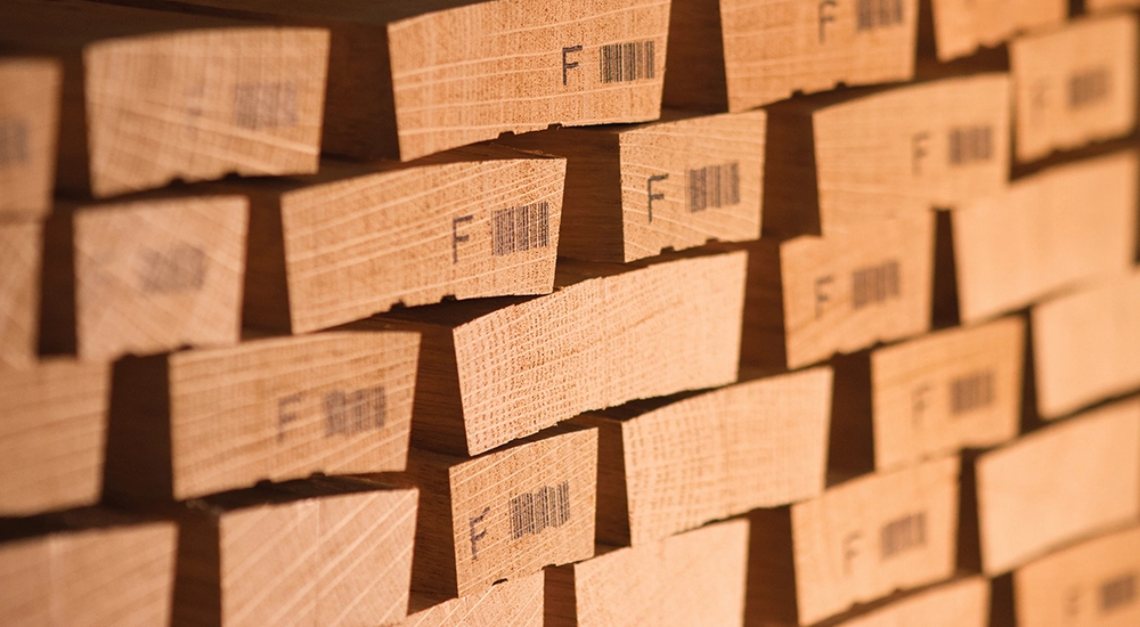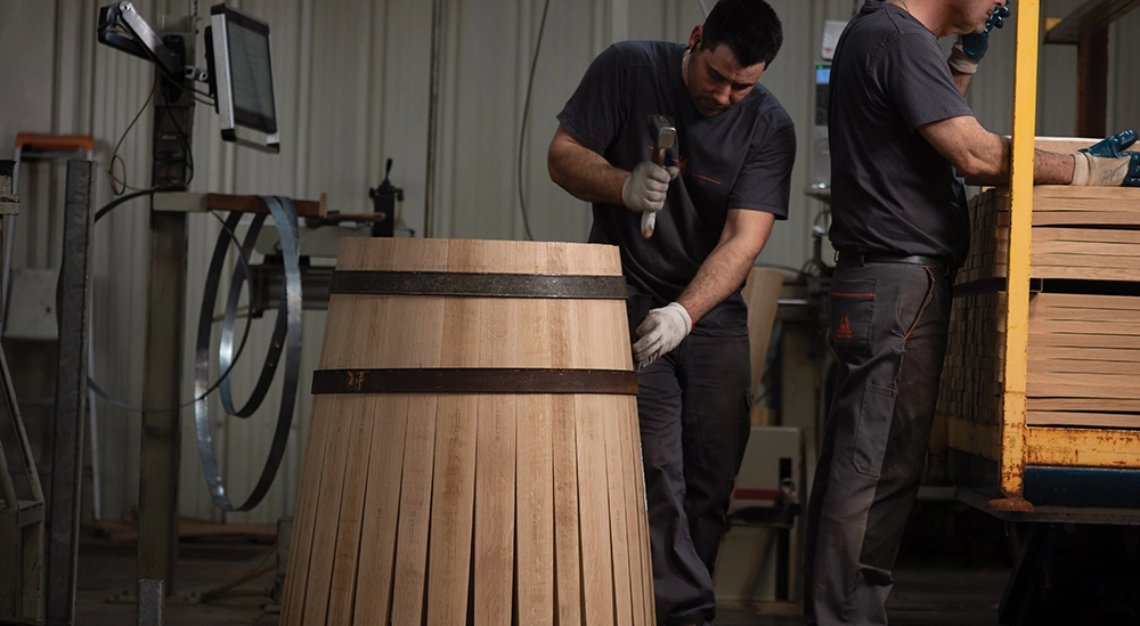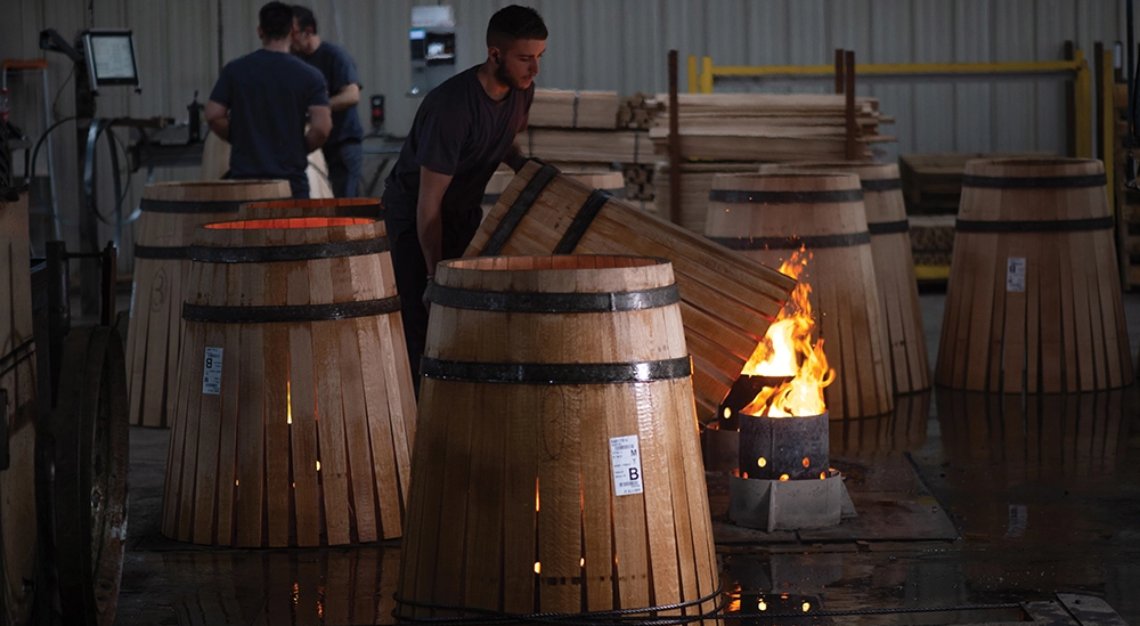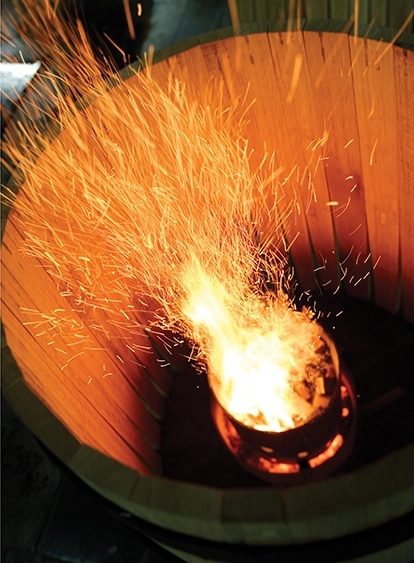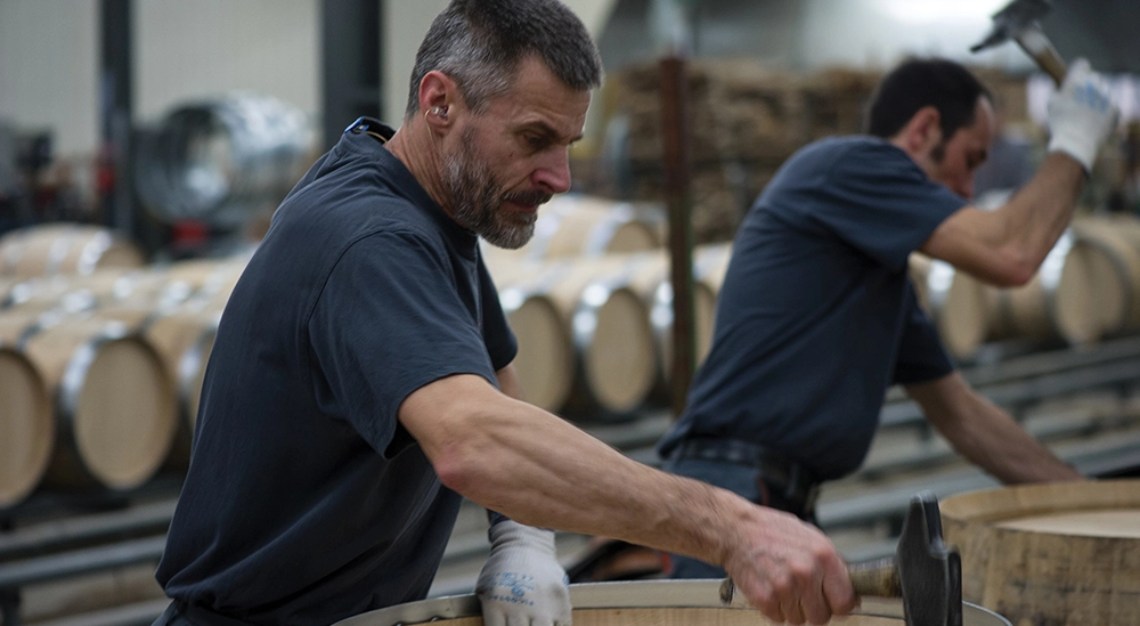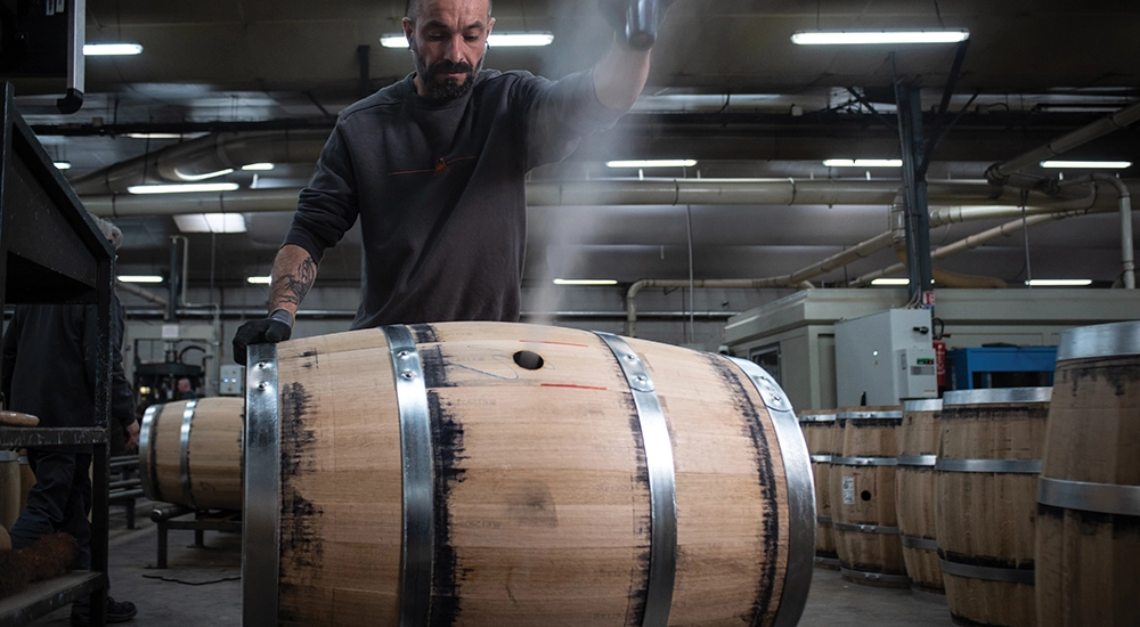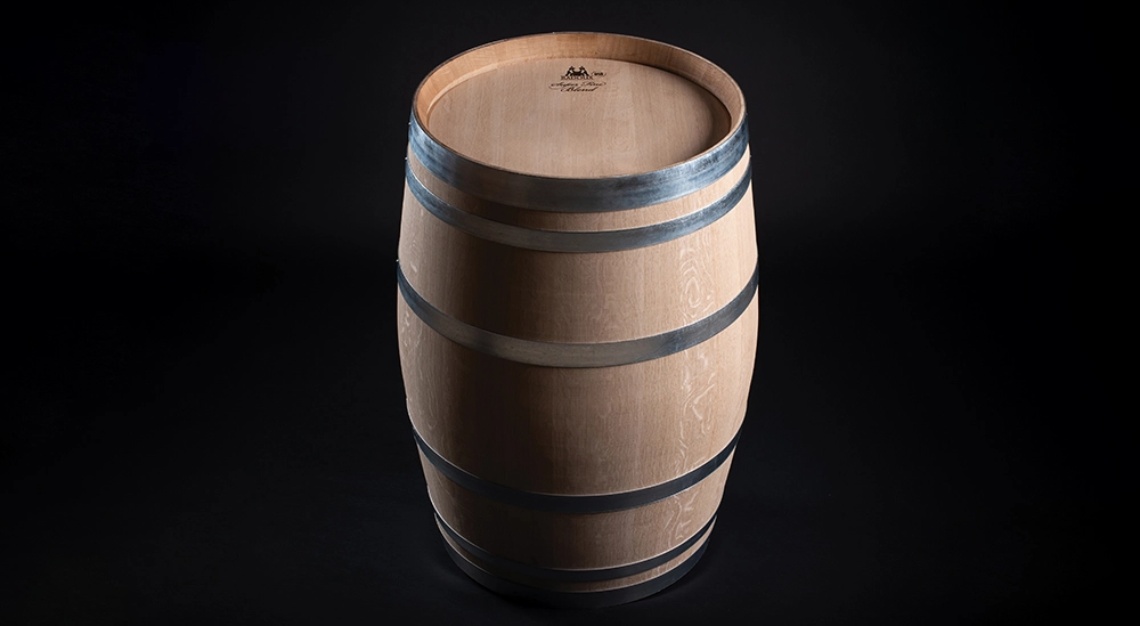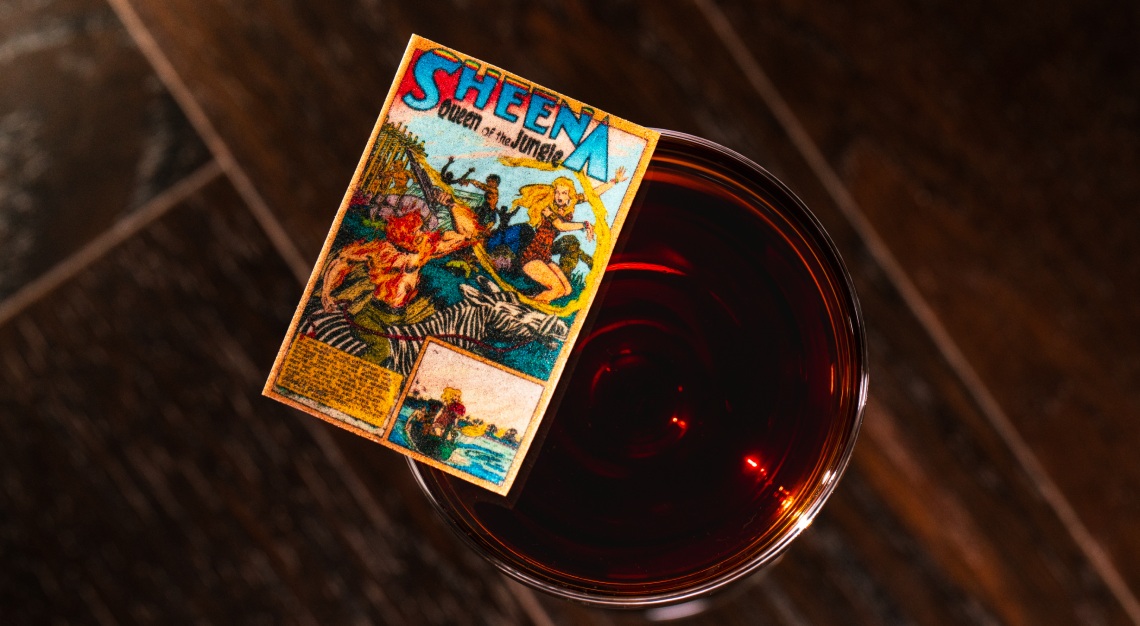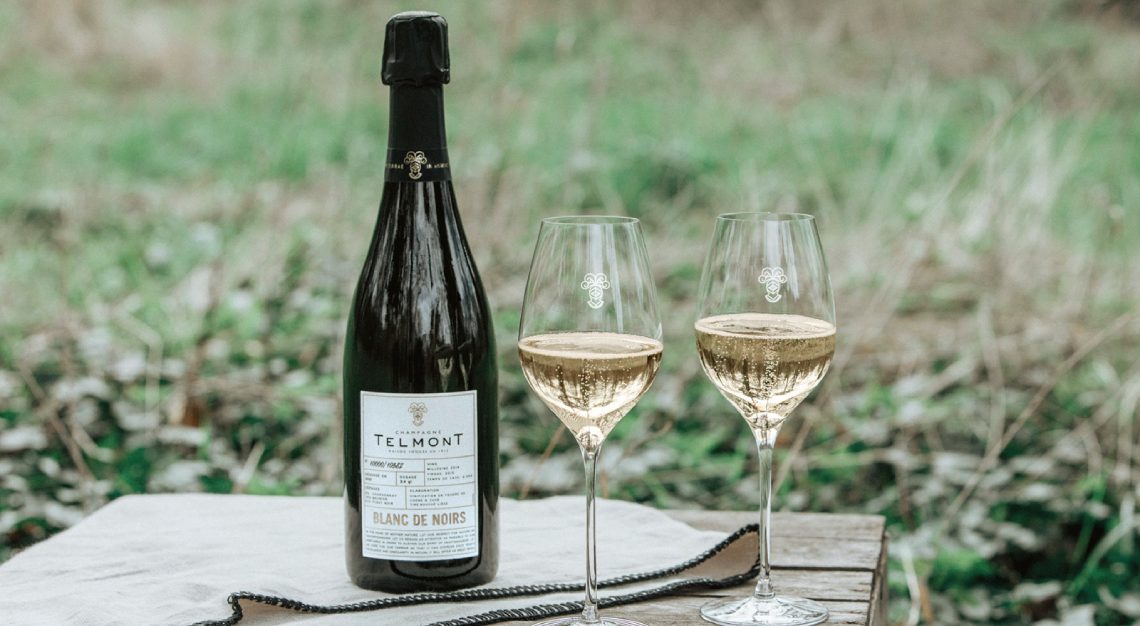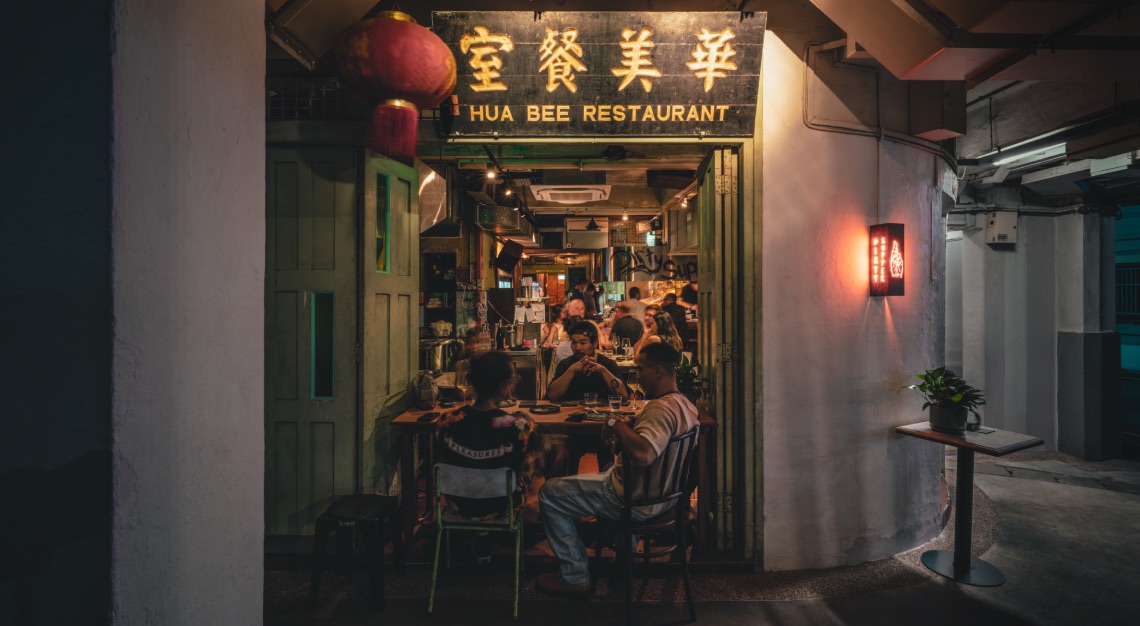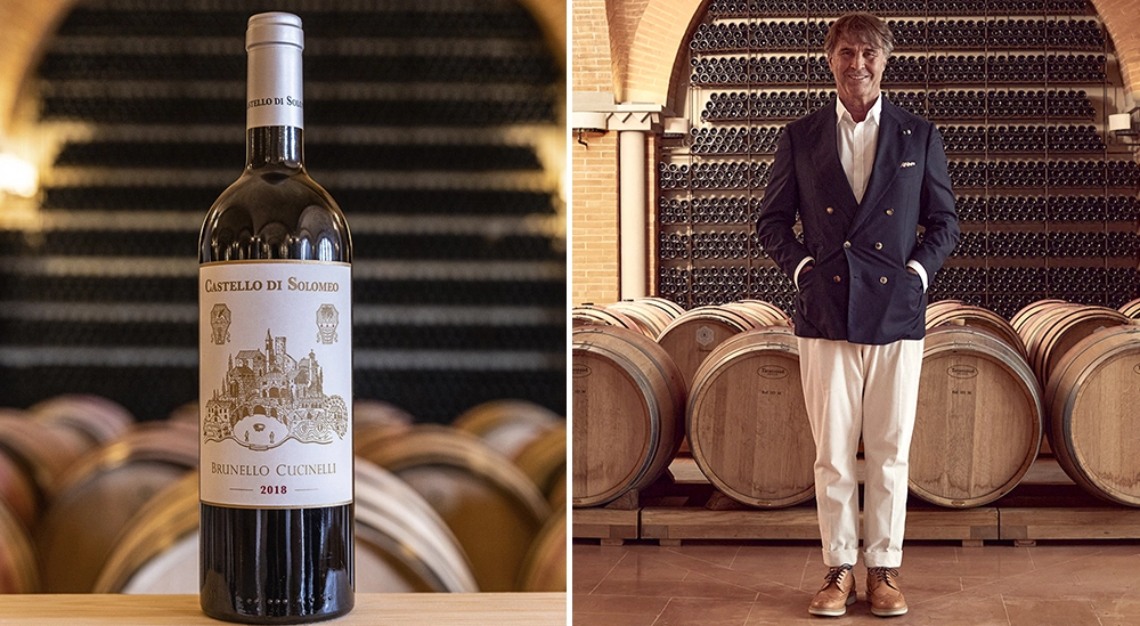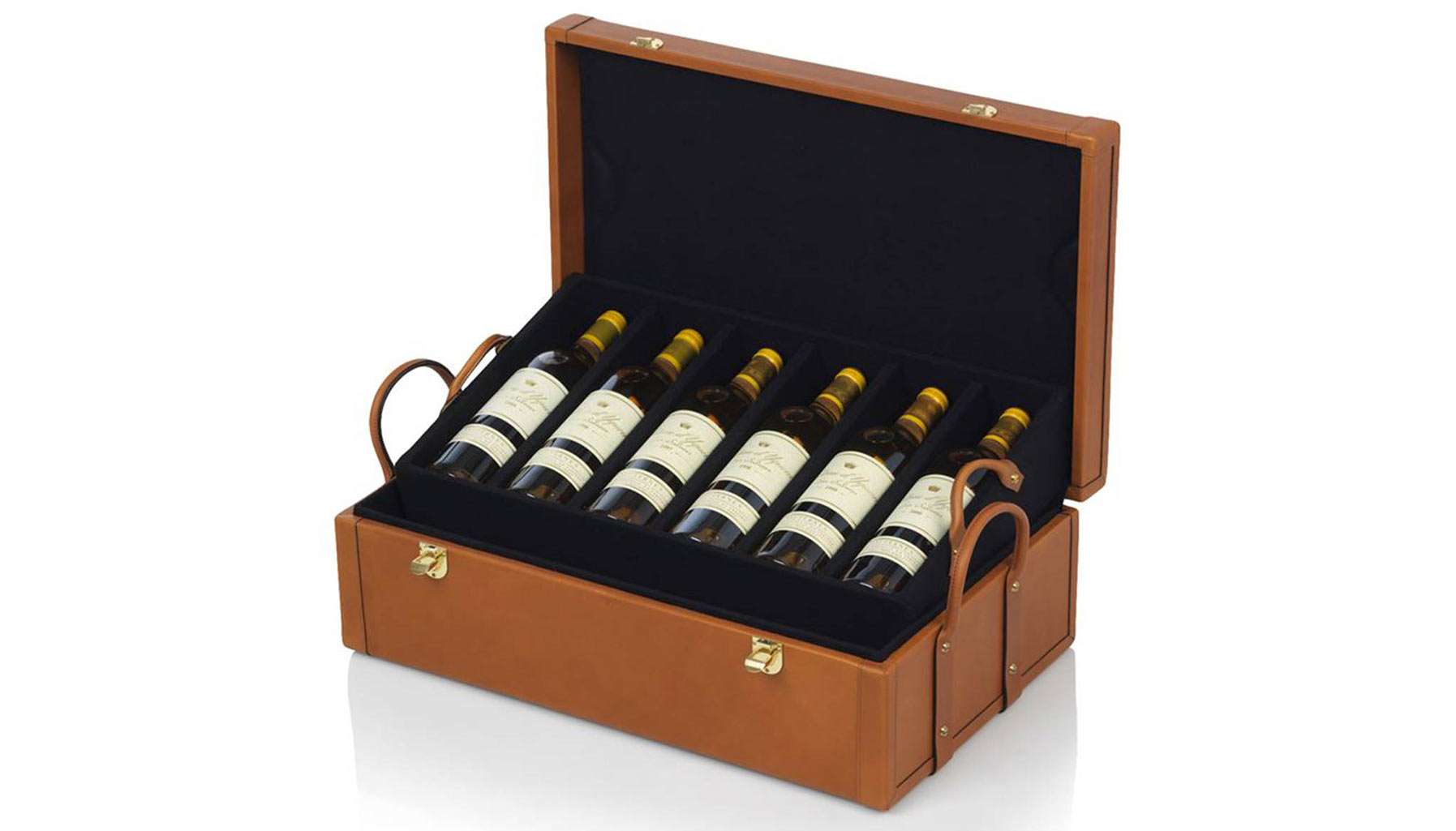Superior grapes require superior oak casks. Radoux uses old-school and high-tech methods for the best barrel results
Written by Jeff Jenssen, wine editor and Mike Desimone, freelance wine writer
Just as great wine is a product of the vineyard, exceptional wine barrels start in the forest. Continuing a tradition that has been in practice for two millennia, the artisans at Tonnellerie Radoux rely on both experience and technology to select oak trees that will be handcrafted into some of the world’s finest wine casks. In 1947, Robert Radoux established a barrel-repair workshop just northeast of Bordeaux, in Jonzac, France; 30 years later, his son, Christian, took over and expanded the business to encompass production, before formally founding Tonnellerie Radoux in 1982.
Now one of the globe’s preeminent barrel makers, Radoux in 1998 became the first in the category to trade on the Paris Stock Exchange. A decade later it launched Oakscan, technology that instantly measures the level of polyphenols—which have a crucial impact on wine’s tannic structure and flavour—contained in barrel staves (the strips of wood that form the vessel). The company was acquired by industry leader François Frères Cooperage in 2012.
Although some Radoux casks are made in California’s Central Valley with American oak, the majority come from Jonzac, in the heart of the Cognac region, from old-growth oak harvested in the centre of the country. In the same way that fine wine is still largely made by hand, barrel-making is a manual process, performed by artisans with an average of 20 to 30 years of experience.
Radoux’s clients include such notable wineries as Napa Valley’s Peju, Château Mouton Rothschild, in Bordeaux, Italy’s Marchesi Antinori and Spain’s Vega Sicilia. “We know from over seven decades in the industry,” says Craig Holme, national sales manager for Tonnellerie Radoux USA, “that our meticulously sourced wood and our handcrafting of that wood into barrels is an extremely important part of fine winemaking for our clients.”
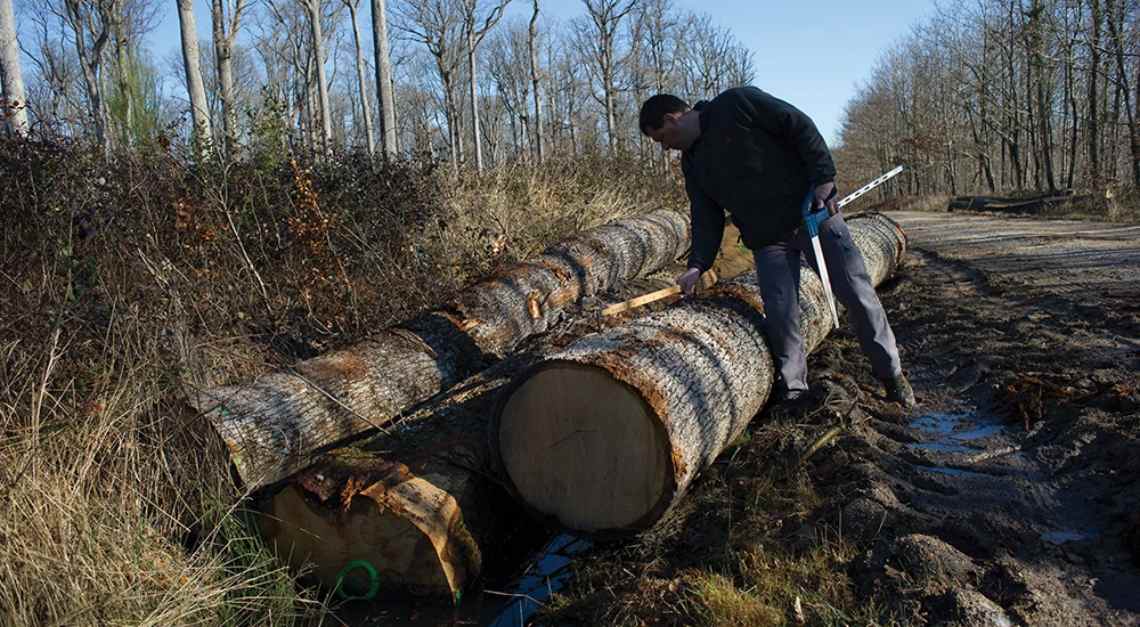
Finding the ring leader
Knowledge, wisdom and experience are essential when wood buyers visit oak forests. These experts zero in on trees that are 150 to 200 years old (or more)
Map it out
After the trees are cut and transported to the cooperage, Radoux uses laser mapping to produce the highest yield of staves from each log. Depending on a tree’s age and size, it can furnish between one and three barrels. After the staves are milled, the wood’s grain is evaluated. More tightly grained oak, sourced from trees with thinner growth rings, is typically reserved for the highest-calibre casks, while looser-grained wood might end up holding less noble wines.
Exposure therapy
The cut staves are left to mature in the open for up to 36 months, stacked in alternating rows to optimise air and rain exposure. The elements help rid them of the most astringent tannins, allowing for softer wood notes to develop in a wine’s profile as it ages.
Level up (or down)
Workers assess every stave with Oakscan (Radoux’s proprietary infrared-light system) to determine the level of polyphenols in each, then barcode and sort the pieces according to those amounts.
A rose begins to bloom
After the rough-cut staves are milled into their final convex form, the cooper chooses those required to make the cask—the average is about 30. The pieces are then laid out according to size and placed vertically inside metal hoops to create a “rose.” This is the first step in fashioning an actual barrel.
Shaping up
The loosely formed barrel is heated by placing it over an open flame, which temporarily makes the wood more flexible. This allows for the staves to be tightened at the bottom and for the positioning of additional hoops that form the desired shape.
Don’t forget the toast points
The cask is returned to the flame to toast the interior. Depending on the client’s winemaking style, barrels can be fired to light, medium, medium-plus or heavy levels of char. In general, the toastier the barrel, the less wood influence will be noted on the palate when tasting the final product. Modern-day toasting is a combination of high-tech and traditional methods: It involves an infrared pyrometer with a laser sight but is performed over braziers tended by a single worker feeding them leftover oak.
Top and bottom
The cooper cuts a channel—called a croze—into each end of the staves. Two flat barrelheads are then built to fit into the channels and pounded into place with a mallet.
Under pressure
At this point, the bunghole—the entry and exit point for wine—is drilled and cauterised. Coopers then pour about 11 litres of scalding water into the barrel and subject it to high pressure to check for leaks. Once this initial test is passed, the temporary hoops are removed, the wood is sanded, and the final galvanised-steel (or, in some cases, for decorative purposes, chestnut) hoops are fitted into place.
Signed, sealed, delivered
The finished cask is laser-marked with the Radoux logo, as well as the client’s name if requested. After a final quality-control check, including a visual inspection, it’s then carefully packed and sent to its new home.
This article was first published on Robb Report USA
